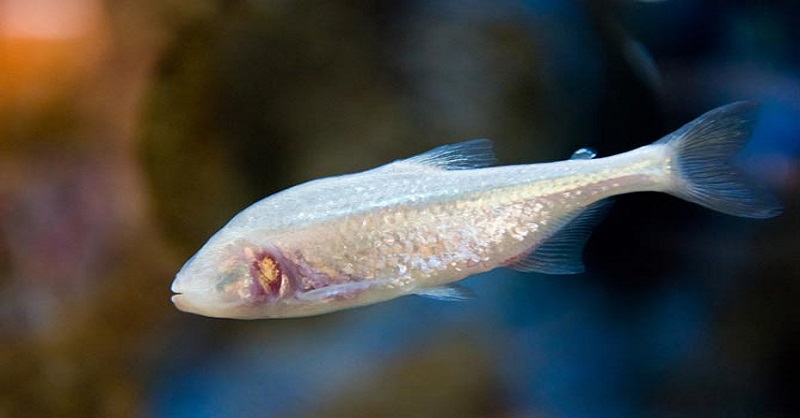
Science claims that evolution is what transformed the apes into the first man. This is applicable to all things in nature.
A new species of blind fish has been discovered inside a cave in East Jaintia Hills district of Meghalaya, a New Zealand-based science journal has revealed.
The fish — Schistura larketensis — gets its name from Larket village, where the cave has been found, the journal, Zootaxa, said.
The species has apparently lost its sight living in the perpetual darkness inside the cave, a joint team of scientists from the Gauhati University and the North Eastern Hill University said.
It has also lost its pigments too while adapting to its habitat in the dark waters, they said.
Khlur Mukhim, a leading researcher from Gauhati University, came across the blind fish in the cave several years ago during an expedition. The cave is about 880 meters above sea level and over 7 km in length.
Mukhim said that the study came out recently though it was found several years ago as he had to corroborate the available facts and figures to establish that the fish was actually blind and belonged to a new species.
The fish sample was collected from small stagnant pools, a few square meters in area and about 1-2 m in depth, about 1,600 feet from the main entrance of the cave.
The pool bed is mostly sandy with pebbles. Other species found inside the cave include weakly pigmented crabs and crayfish, spiders, crickets, cockroaches and millipedes, small frogs and snakes.
Scientists had, in the past, chanced upon porcupine paws and quills on the muddy floor of a passage in the same cave.
The fish was named after Larket village to encourage local people to take up biodiversity conservation, Khlur said.
Although there are about 200 known species of similar kind inhabiting streams and rivers throughout Indochina and Southeast Asia, this is the first such discovery, according to the researcher.
The new fish species can also be immediately distinguished from all other species of Schistura, barring Schistura papulifera — another cave fish from Synrang Pamiang cave system in the same district — for its vestigial subcutaneous eyes appearing as black spots.
Khlur said the orbital diameter gradually decreases as the species matures, with the eyes completely absent in older individuals.
Eventually, only small, faintly blackish spot-like depressions appeared in place of eyes, indicating evolutionary and as morphological adaptations.
The researchers have also expressed regret to see the high level of siltation, pollution and acidification of the water drainage systems in Jaintia Hills due to accumulation of acid mine drainage (AMD) from open-cast coal mining.
Several cement plants located on top of the wide and long cave systems are threatening the cave biodiversity as a whole, the researcher said.

Post Your Comments